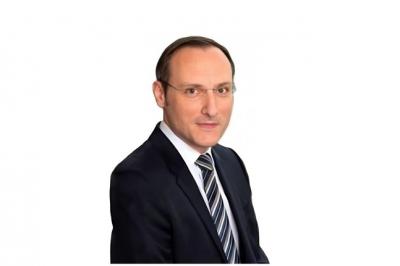Helping Asia’s Private Clients Identify Opportunities and Minimise Risks Amidst Ongoing Global Uncertainty

Nov 6, 2023
On September 28, Hubbis and our exclusive partner for the event, BNY Mellon Investment Management, held a private, behind-closed-doors thought-leadership discussion attended by selected decision-makers from leading private wealth management firms, family offices and other specialists based in Singapore. We all know the issues the world is facing, from stubbornly high inflation and higher/rising rates - particularly in the Western economies - to some of the most worrying geopolitical issues for many a decade. The mission of this event was to survey these many prevailing and escalating geopolitical, fiscal, and financial concerns around the globe and then to focus on how private clients can or should react. They certainly need robust, tough portfolios, and the experts highlighted how broadly diversified asset allocation can help achieve such resilience. They also drilled down into the preferred asset classes and sectors and discussed how these reinforced, weather-proofed portfolios can be constructed. Accordingly, the event tackled some of these questions. What is the outlook for interest rates in the US and in Europe? And how should investor clients react? Is there an equity market bubble? If so, where? Where can investors find value today? In the fixed-income and credit markets, should private clients today be investing in higher-quality asset classes, or should they go down the credit spectrum to earn more income, albeit with greater risk? What types of assets and strategies are likely to provide the most robust and effective portfolio diversification? As to the format for the gathering, Aninda Mitra, Head of Asia Macro & Investment Strategy at BNY Mellon Investment Management, first delivered a presentation to guests, followed by an open discussion and a Q&A amongst the BNY representatives and assembled guests. Hubbis has distilled Aninda’s views and also selected a number of comments from some of his BNY Mellon colleagues at the event, which were offered mostly in response to questions from the other guests. We have presented all BNY team views on the record.
The Attendees from BNY Mellon
- Aninda Mitra, Head of Asia Macro & Investment Strategy, BNY Mellon Investment Management
- Clarence Chan, Singapore CEO and Head of Client Solutions, APAC ex Japan, BNY Mellon Investment Management
- Charles Martin, CFA, Portfolio Specialist, Insight Investment (a BNY Mellon Investment Management firm)
- Murdo Maclean, Client Investment Manager, Walter Scott (a BNY Mellon Investment Management firm)
Key Takeaways and Insights from the BNY Mellon Team
The US recession seems like a mirage that vanished before our eyes due to a number of extraordinary factors that market watchers underestimated. But that was then, things are changing fast, and that mirage might just come back into clear focus ahead…
Aninda Mitra: The recession talk has really gone for now, it just seemed to disappear from sight. In March, we were all wondering about the credit crunch, the regional banks being in trouble and lending shrinking dramatically, and how that would tip the US economy over into a recession. But none of that has happened. What we all seem to have underestimated are some exceptional factors.
Number one, the very tight labour markets in the US. One million US middle-aged workers passed away during the pandemic, there was little or no immigration for two years, and while things are better, there's still a massive shortage of workers. Real wages, which are wages adjusted for headline inflation, are positive and still high.
Secondly, there are excess savings. There was a huge amount of pandemic stimulus and people used that money even when they were not working or when the unemployment rate shot up for a while.
And thirdly, fiscal stimulus. The US government has spent a lot of money on the Chips Act and the Inflation Reduction Act to draw investment back into the US economy. Yes, this has strained public finances and led to the Fitch downgrade of the US, but this combined with the first two factors are all responsible for the resilience in the US economy we have all witnessed.
But the picture might become rather different, as the positive tailwinds die down and the Fed’s hawkish position and its seeming intent to throttle back the economy continue
Aninda: However, the Fed is fighting hard to rein in the economy and these tailwinds are blowing over. Excess savings as of June were down to about 5% of GDP up from as high as 15% or 18% at the beginning of the year. And when those dissipate, that just leaves the real wages buffer to rely on.
But those wages were high in real terms because inflation was constrained by improving supply chains and falling oil prices. Now, that is largely past and oil is back up, and the positive effect on prices of the supply chain readjustments are largely in the past, and we will likely see a pass-through to goods prices globally. This means that if you look at nominal wages minus CPI inflation, that will not be that high anymore, so real wages will erode.
Without going into more detail and nuances, we had thought the odds of a recession were as high as 60% to 80%, and now we are down to 50-50 looking ahead.
We have been more in a sort of ‘Goldilocks’ situation with resilience in the economy and inflation having been reined back, but the Fed has ambitious targets of 0.2% monthly inflation, meaning 2.4% annualised in the foreseeable future. Right now, they have something like 3.7% targeted by the end of this year, and we are at 4.2%-4.3%. But even in the medium-term 2% or so inflation annually looks very challenging.
This means the Fed will stay hawkish, meaning higher rates for longer, and smaller cuts when they come. We are not ruling out more of a Goldilocks situation characterised by ‘immaculate’ disinflation, but we are assigning roughly 20% odds to that, and as I said, 50% odds to a recession in the year ahead.
The US dollar is strong again, and the US dollar looks fairly bulletproof for the foreseeable future, with nothing else presenting itself as a natural or viable replacement
Aninda: There has been talk of de-dollarisation and there are negatives for the US dollar, but no other currency in the world is as liquid or backed by such deep capital markets. With US interest rates expected now to be high for longer with the hawkish Fed, and with Europe probably unable or unwilling to be so tough, the dollar looks set to be robust. In fact, we can say nobody’s calling for a weak dollar any more at the moment.
Looking back in history to assess dollar cycles, we are now in a nine-year upward cycle, but it has not ended yet, even though this is the longest appreciation cycle we have witnessed.
Actually, we're still at a stage where the Dollar can take more appreciation versus any other currency. Can you see the Japanese Yen do that? Can you see the Euro do that? Even the Yuan looks like it's in trouble at the moment unless you see a massive stimulus coming out, which nobody seems to be anticipating at the moment. All in all, we are positive, if not actually bullish, on the dollar right now, unless of course, we see a U-turn from the Fed towards an easing stance.
The implication for portfolios is for investors to stay fairly heavily skewed to US dollars and weighted towards US assets
Aninda: We're looking at international divergence, where the US does better, and everybody else trails. So we favour US assets a little bit more over non-US exposures. And given that the Fed is still hawkish, we prefer fixed income more broadly over equities, not huge directional bets. Hence, we are suggesting slightly overweight fixed income and slightly underweight equities.
Additionally, the AI story will play out and that favours the US more than it does other major economies in the world.
Maybe in 6 to 9 months, we will be somewhat past cyclical headwinds from the Fed, and from lingering inflation, and we could see more upside to riskier assets. But, for now, at least, we are being a bit more defensive in our approach.
We like where yields are. We are slightly underweight equities. On an intermediate basis, if you don't have a strong view about any specific scenario playing out fully, the best hedge would be some credit products in terms of getting an extra carry over and above US Treasury yields. But we would suggest being on the safer side of the credit spectrum and preferring investment grade over high yield.
Fixed-income yields are back to pre-GFC levels and should lead investors to somewhat over-weight bonds in their diversified portfolios
Charles Martin: The uncertainty continues and when we look at our investment views for next year, there are a number of different scenarios ahead. But the key point for me is that from a fixed-income perspective, yields have not been this high since before the Global Financial Crisis.
This is beneficial for clients. First, clients need income as part of their diversified portfolio. Second, many investors who run a balanced portfolio often look to that fixed-income portion of the portfolio to deliver that diversification, and with yields as they are FI can deliver that diversification. In short, I would say don’t focus too much on the risks, but more on the opportunities.
As to types of exposures, higher rates generally weaken economies, so typically leverage is not good, meaning high yield tends to do poorly in those types of scenarios. And on a historical basis, HY is quite expensive.
Looking at historical norms and data, we can say that investment grade is moderately cheap. In other words, high-yield spreads are not really pricing any type of recession risk, whereas perhaps investment-grade paper is. The result is that certainly in some of the global strategies that we manage, we are up in credit quality, more on IG and very little to HY.
Having said that, in HY we focus only on rising stars that are really strong companies. And given the very inverted yield curve at the moment, short-term paper is yielding more than longer-dated paper, so there are some opportunities at the shorter end of HY, and there the risks are lower because it is easier to assess nearer-term.
Moreover, there are some inefficiencies in the high-yield market, where upgrades might not be properly factored in, for example, and we follow these ‘fallen angels for opportunity.
With the US Fed’s hawkishness first in mind, there are no clear signs that things are going to change, so do not assume they will (until they do)
Charles: I can comment that the Fed is really being driven by the inflation data. If we get irrefutable evidence that the inflation beast has been vanquished, then that is a clear catalyst to change views.
There are geopolitical issues that will also be catalysts for changing perspectives, but for example, if the Ukraine war is resolved, that might take some of the risk premium out of European bonds versus US bonds. But these are incredibly difficult to predict, so geopolitics can only be secondary-level catalysts. A third key catalyst we are watching is consumption, scanning for signs of markedly lower spending.
Equities should always be present in portfolios, but we must all learn to be a bit more patient than in the past decade or so, and focus on realistic, long-term returns
Murdo MacLean: As background, Walter Scott is a global equity specialist, and we have been managing global equity portfolios for the past 40 years., and as such we are used to uncertainties around the world, and to navigating what is in front of us. There are uncertain times, but not unprecedently so.
We believe some degree of equity exposure is always advisable. Equities are one of the most reliable ways to tap into global economic growth, and selectively tap into some of the most exciting areas. Equities will, based on historical evidence, deliver 5% or 6% per annum, and our target is to beat that. Yes, we have been spoiled in the last 10 years, but we are comfortable in equity exposures, despite the near-term headwinds.
However, investors must be patient. As I said, the past decade has been somewhat exceptional, and we have all become a bit less patient. I would point to excessive negativity around China currently, for example, but we must be more patient, especially when considering turning around an economy as vast as that of China.
Walter Scott is a bottom-up manager that plays thematics but whose allocations are driven by value and potential, and not predicated on short- or long-term trends
Murdo: We are a bottom-up manager, so we will buy a business that looks financially attractive and then understand what forces are driving those returns, that profitability. Very often, those forces link to the key thematics, the key trends in the world, but that is not our first cut.
More generally, we believe in companies with true integrity. We like value, and we recognise that the Magnificent Seven have distorting indices and valuations, meaning that there is value even today in the market from a much broader perspective. There are lots and lots of interesting opportunities outside of just tech or AI, where everyone is crowding into NVIDIA. Actually, we don't own it, but we do own lots of other companies that will benefit in the long term from AI, but don't necessarily look that expensive.
We do not spend much time listening to consensus because it seems to change so often. In our view, really long-term fantastic companies and the things that propel them are multi-decade dynamics, in other words, things change very slowly. If you look at it long enough, you can very clearly see that a lot of these trends are still going to continue.
A non-consensus view we have right now is to disagree with the view that because interest rates are now hovering around 5% and we don't know where they're going, growth investing is dead. I would definitely dispute that but it does depend on your time horizon clearly. Ultimately what drives share prices is growth and earnings and cash flows.
In short, I find it hard to imagine a situation where companies that are not growing, are suddenly going to lead the market for long stretches of time. For us today, the outlook for cyclical businesses in our minds is not particularly attractive because you're talking about a slowing economy and a cost of capital risk aversion; that situation does not tend to benefit the more cyclical sectors in the market.
I would add that we cannot be distracted by all these assumptions and guesses out there, as we simply do not know. We believe in high conviction. Otherwise, you might as well be in cash because these non-stop financial, fiscal and geopolitical short-term challenges will test that conviction big time. We invest with conviction and for the long-term view.
A Short Note on BNY Mellon Investment Management
BNY Mellon Investment Management is one of the world’s largest asset managers, with USD1.8 trillion in assets under management as of September 30, 2023. Through an investor-first approach, BNY Mellon Investment Management brings to clients the best of both worlds: specialist expertise from seven investment firms offering solutions across every major asset class, backed by the strength, stability, and global presence of BNY Mellon.
BNY Mellon Investment Management is a division of BNY Mellon, BNY Mellon is a global investments company dedicated to helping its clients manage and service their financial assets throughout the investment lifecycle. Whether providing financial services for institutions, corporations or individual investors, BNY Mellon delivers informed investment and wealth management and investment services in 35 countries.
As of September 30, 2023, BNY Mellon had USD45.7 trillion in assets under custody and/or administration, and USD1.8 trillion in assets under management. BNY Mellon can act as a single point of contact for clients looking to create, trade, hold, manage, service, distribute or restructure investments. BNY Mellon is the corporate brand of The Bank of New York Mellon Corporation (NYSE:BK).
Additional information is available on www.bnymellon.com
And additional information on BNY Mellon Investment Management is available here: www.bnymellonim.com
The BNY Mellon Speakers and their Bios in Brief
Aninda Mitra, Head of Asia Macro & Investment Strategy, BNY Mellon Investment Management
Aninda is based in Singapore and reports directly to the Global Chief Economist for BNY Mellon Investment Management. He is the primary contact for the firm’s clients, prospects and consultants in the APAC region for providing ongoing updates and insights about the economic, market and investment outlook for China and other major Asian economies, as well as implications for asset classes.
Aninda has 25 years of experience in the financial services industry. Prior to joining the firm’s Global Economics and Investment Analysis team, he was a Senior Sovereign Analyst at Mellon Investment Corporation (formerly Standish Mellon) for more than seven years.
Charles Martin, CFA – Portfolio Specialist, Insight Investment (a BNY Mellon Investment Management’s firm).
Charles joined Insight in May 2012. He is responsible for advising clients on investment strategy and reporting on performance. Charles relocated to Hong Kong in August 2014 as a portfolio specialist in order to provide support to clients in the Asia Pacific region. He is currently based in Singapore.
Prior to joining Insight, he spent 10 years at BNP Paribas. Charles holds a BBusSc Honors degree in Marketing & Finance from the University of Cape Town, South Africa. He is a CFA charter holder and holds Type 1 & 4 licenses from the Securities and Futures Commission (SFC) in Hong Kong as well as being a licensed representative in Singapore.
Murdo Maclean, Client Investment Manager, Walter Scott (a BNY Mellon Investment Management’s firm)
Murdo joined Walter Scott in 2006. Over the last 12 years, he has been an Investment Manager within the firm’s global research team with responsibility for a range of stocks in Asia and North America. Murdo has also spent time supporting the firm’s clients, particularly in Japan. He then in 2019 became a Client Investment Manager supporting a number of clients and distribution partners.
Prior to joining Walter Scott, Murdo lived and worked in Japan for six years. He holds a BA (Hons) in Japanese and Marketing from the University of Stirling.
Clarence Chan, Singapore CEO and Head of Client Solutions, APAC ex Japan, BNY Mellon Investment Management
Clarence is responsible for building out the firm’s outsourced chief investment officer business in the APAC region. Clarence brings over 20 years of experience spanning active and passive investments. He was most recently the Head of ETFs at China Asset Management, overseeing the firm’s ETF business across Asia. Prior to that, he was the Head of ETF and ETF Portfolio Management, APAC at BMO Global Asset Management.
He also held investment positions at BlackRock Asset Management, Exelion Capital Management, Morgan Stanley Investment Management, Morgan Stanley Capital International. He also had experience working at the Monetary Authority of Singapore. Clarence earned his Bachelor’s Degree in Business Administration degree from the National University of Singapore.
Important Information
In Singapore, this document is issued and addressed solely to Institutional Investors within the meaning of the Securities and Futures Act 2001 (the “Recipient”). This document is for the exclusive use of the Recipient. The Recipient shall not issue, circulate, distribute, publish, reproduce or cause to be issued, circulated, distributed, published or reproduced (whether in whole or in part) this document to any other persons without the prior written consent of BNY Mellon Investment Management Singapore Pte. Limited.
All information relating to this document has been prepared by Insight Investment and Walter Scott for presentation by BNY Mellon Investment Management.
Any views and opinions contained in this document are those of Insight Investment and Walter Scott as at the date of issue; are subject to change and should not be taken as investment advice. BNY Mellon Investment Management and its affiliates are not responsible for any subsequent investment advice given based on the information supplied.
BNY Mellon is the corporate brand of The Bank of New York Mellon Corporation and may also be used as a generic term to reference the corporation as a whole or its various subsidiaries.
This document is not intended as investment advice. Investment involves risk. Past performance is not indicative of future performance. No investment strategy or risk management technique can guarantee returns or eliminate risk in any market environment. The value of investments and the income from them is not guaranteed and can fall as well as rise due to stock market and currency movements. When you sell your investment, you may get back less than you originally invested.
This document may not be used for the purpose of an offer or solicitation in any jurisdiction or in any circumstances in which such offer or solicitation is unlawful or not authorised.
No warranty is given as to the accuracy or completeness of this information and no liability is accepted for errors or omissions in such information.
The investment program contained in this presentation may not meet the objectives or suitability requirements of any specific investor. An investor should assess his/her own investment needs based on his/her own financial circumstances and investment objectives.
Portfolio holdings are subject to change at any time without notice, are for information purposes only and should not be construed as investment recommendations. The information contained in this document should not be construed as a recommendation to buy or sell a security. It should not be assumed that a security has been or will be profitable. There is no assurance that a security will remain in the portfolio. Tax treatment will depend on the individual circumstances of clients and may be subject to change in the future.
This advertisement or publication has not been reviewed by the Monetary Authority of Singapore. You are advised to exercise caution when reading this document. If you are in any doubt about the contents of this document, you should obtain independent professional advice.
If there is any inconsistency between this warning statement and the disclosure stated under this document, this warning statement shall prevail to the extent of the inconsistency.
In Singapore, this document is issued by BNY Mellon Investment Management Singapore Pte. Limited, Co. Reg. 201230427E. BNY Mellon Investment Management Singapore Pte. Limited and any other BNY Mellon entity mentioned are ultimately owned by The Bank of New York Mellon Corporation.
MC247-25-10-2023 (6M)








